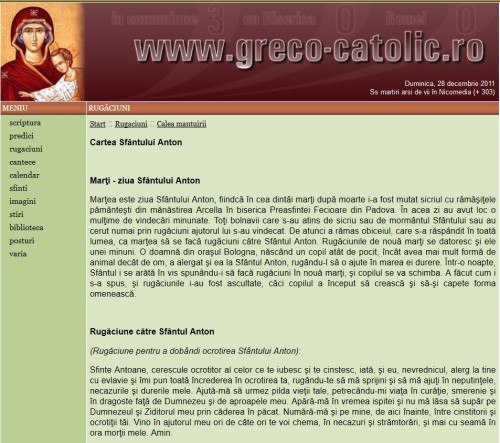South Korea offers talks to North http://www.bbc.co.uk/news/world-asia-30621112
myworld
RSS LINKS
-
Join 3,458 other subscribers
Hi welcome to EuZicAsa: Enjoy: Make this blog yours: Subscribe/rate/comment. Thank you&come back soon.
Subscribe To My YouTube Channel or SoundCoud Poems
-
Recent Posts
- Horoscope♉: 04/12/2020 April 12, 2020
- Today’s Holiday: Annual Bottle Kicking and Hare Pie Scramble April 12, 2020
- Today’s Birthday: Lanford Wilson (1937) April 12, 2020
- This Day in History: Sidney Poitier Becomes the First African American to Win Best Actor Oscar (1964) April 12, 2020
- Quote of the Day: Jane Austen April 12, 2020
- Article of the Day: Jean Duvet April 12, 2020
- Idiom of the Day: have (one’s) head in the sand April 12, 2020
- Word of the Day: wallop April 12, 2020
- Watch “All That Jazz – The Opening” on YouTube April 11, 2020
- Watch “All That Jazz Bye Bye Life” on YouTube April 11, 2020
- Horoscope♉: 04/11/2020 April 11, 2020
- Today’s Holiday: Vlöggelen April 11, 2020
- Today’s Birthday: Herbert Jeffrey “Herbie” Hancock (1940) April 11, 2020
- This Day in History: Liberian President William R. Tolbert Is Killed in Military Coup (1980) April 11, 2020
- Quote of the Day: Charles Dickens April 11, 2020
- Article of the Day: Pyotr Stolypin April 11, 2020
- Idiom of the Day: have (one’s) hand out April 11, 2020
- Word of the Day: tomfoolery April 11, 2020
- Watch “Amazing Grace – Best Version By Far!” on YouTube April 11, 2020
- Watch “Pope Francis’ five cries amid the pandemic” on YouTube April 11, 2020
- Watch “Pope Francis’ five cries amid the pandemic” on YouTube April 11, 2020
- Horoscope♉: 04/10/2020 April 10, 2020
- Today’s Holiday: Caitra Parb April 10, 2020
- Today’s Birthday: Charles Evans Hughes, Sr. (1862) April 10, 2020
- This Day in History: Buchenwald Concentration Camp Liberated by American Troops (1945) April 10, 2020
- Quote of the Day: Herman Melville April 10, 2020
- Article of the Day: Operation Gladio April 10, 2020
- Idiom of the Day: get (one’s) ears lowered April 10, 2020
- Word of the Day: soothsayer April 10, 2020
- Horoscope♉: 04/09/2020 April 9, 2020
Access Archived Postings
Search My Site
Top Posts & Pages
- Check these 11 movies for the sexiest streamable moments in recent cinematic history. (From "THE COSMOPOLITAN" via "PINTEREST")
- - Mamă, pot sa le spun acolo (Viena) că sunt român?, întreabă deodată Jujac (George Enescu) - Sigur, de ce să nu le spui? -Mă gândeam ...să nu creadă ...că mă laud." George Enescu (19 August, 1881 - 4 Mai, 1955)
- Watch "Engelbert Humperdinck - Les Bicyclettes De Belsize" on YouTube
- Watch "Romanian Patriotic Song - Drum Bun // Farewell (English lyrics)" on YouTube
- Watch "Léo Ferré - Avec le temps [ English Subtitle ] [ Long Version ]" on YouTube
- Urami Bushi - Meiko Kaji (English Translation)
- Gabriel FAURE': Pavane, Op. 50 - Paintings By "CLAUDE MONET"
- The Wallflowers - The empire in my mind (theme song to The Guardian)
- Mircea Eliade, ”Exerciții spirituale”
- Câmpulung Muscel , în germană Langenau, în maghiară Hosszúmező, în limba slavonă Dlagopole...
Clustermaps
Many A Choice:
(The smudge and other poems) Arsenic Article of the Day ARTISTS AND ARTS - Music Arts Arts, Virtual Museums tour. Arts -Architecture Arts -Architecture, sculpture Asbestos toxicity AudioBooks biking BOOKS coronavirus Daily Horoscope DAILY POSTS TOPICS e-books ebola Educational English Grammar Environmental Health Causes Facebook FILM Fitness Fitness, running, biking, outdoors flashmob FOOD AND HEALTH GEOGRAPHY good foods Gougle+ Graphic Arts Haiku Hazardous Materials Exposure Health and Environment Idiom of the Day infections disease IN THE SPOTLIGHT INVENTIONS, PATENTS Lead Toxicity Lyrics Medical Library MEMORIES Mercury Toxicity MUSIC MY TAKE ON THINGS News ONE OF MY FAVORITE THINGS on the mundane side of the town outdoors Painting PEOPLE AND PLACES HISTORY PEOPLE AND PLACES HISTORY, GEOGRAPHY Pesticides Photography Poetry Poetry, Poets, Writers Poets QUOTATION Quote of the Day Radiation induced Cancer and death Radiation Poisoning running sculpture, sculptors SITE DEVELOPMENT Social Media SoundCloud Special Interest SPIRITUALITY surveillance Tai Chi This Day In History This Pressed (Press this) Today's Birthday today's Holiday Twitter Uncategorized Virtual Museums tour. Weather Whistle Blowers Word of the Day Writers Yerba maté Yoga YouTube/SoundCloud: Music YouTube/SoundCloud: Music, Special InterestShare On Twitter
Easy Search
Allegro amp Antonín Dvořák art Arts -Architecture, sculpture Associated Press aviation Barack Obama Beethoven Business California Canada Catholic Church China Christianity Christmas Classical music climate England entertainment Environment EUZICASA Facebook France Franz Schubert Frédéric Chopin gaming Germany God Google Great Compositions/Performances Health History Israel Italy Japan Jesus Johannes Brahms Johann Sebastian Bach Leonard Cohen Literature London london symphony orchestra Ludwig van Beethoven Make Music Part of Your Life Series Middle East Mozart Music nature New York New York City Orchestra Paris Piano Politics Pope Pyotr Ilyich Tchaikovsky robert schumann Rome Russia science Shopping Television Tempo transportation Twitter United States Valentina Lisitsa video Vienna wikipedia Wolfgang Amadeus Mozart World Literature World War II YouTubeArchived Posts
Share This Post With AddThis:
Visitors’ Country Flag:
My Community
Hit Counter
- 633,274 hits
Bathtub Bulletin access here
Chelsea Hotel #1
Translate This Post:
ONLINE REFERENCE: Dictionary, Encyclopedia & More…
REPUTATION
Blogroll
- Learn WordPress.com 0
- Discuss 0
- check out their pictures: Inspiring! 0
- SoudCloud My Poetic thoughts Recitation Here 0
- one heck of a guy (Leonard Cohen 0
- Get Support 0
- WordPress Planet 0
- Plinky 0
- The Daily Post: 'Post Something Everyday' Subscribe and post! 0
- Leonard Cohen Home | The Official Leonard Cohen Site 0
Spam Blocked
Microsoft® Translator
/* */
Internet Archive: Digital Library (Universal Access to all Knowledge)
Island of Lonliness- Rie Sinclair
Gutenberg Project Find your Free eBooks online!
KUSC.org, CLassical FM 91.5
VEOH.TV: ENTERTAINMENT ONLINE FREE: Give it a try!
Lyrics to Your Fave Songs:
PLANET ROCK ONLINE RADIO
Actor Showcase: Check it out here!
Access Song meaning Here
The Google Art Project is here
Allspirit: poetry, quotations, song lyrics, writings
Wikiquote: Access from here
CATO Institute

CATO Institute (Access Here)
Jango (more than just an online radio….Get on it)
- https://euzicasa.files.wordpress.com/2013/02/island-of-loneliness-rie-sinclair.mp3
ProPublica Journalism in the Public Interest
THE UNIVERSAL DECLARATION OF HUMAN RIGHTS
Constitution of the United States – access here
Twitter
Tweets by GeorgeBostWebMD: Access from here
NATIONAL GEOGRAPHIC CHANNEL (ACCESS FROM HERE)
OPEN LIBRARY IS YOURS: ACCESS HERE
Center for Effective Government (access site here)
ELECTRONIC FREEDOM FOUNDATION: ACCESS HERE
Vintage Music: Access from Here
NATIONAL GEOGRAPHIC WEBSITE: ACCESS HERE
Legends of America – Visit here
FAMOUS POETS AND POEMS: ACCESS FROM HERE ANYTIME – ANYWHERE
kjazz 88.1 FM (CSU, Long Beach: ACCESS HERE)
Public Catalogue Foundation (access from here)
Environmental Working Group: Access Here
Change.org (access from euzicasa)
Change.org: "The world’s petition platform.
What will you change?"ALEXA: euzicasa | Share something you learned everyday!
The Smithsonian Encyclopedia of Life (Collection of Sounds)
HAIKU TOPICS (ACCESS HERE)
American Songwriter .com (Access from here)
LAWEEKLY – ACCESS HERE
Lyrics, Song Lyrics – SweetsLyrics.com
WEB GALLERY OF ARTS – ACCESS HERE
THE BRITISH LIBRARY (ACCESS HERE)
http://www.americanbonehealth.org/
THE ARIA DATABASE_SEARCH ( U R 1 CLICK AWAY)
AllMUSIC_Widget (one click away)

AllMusic (one click away)
WIDGET_Classic Cat: The Free Classical Music Directory (one click away)
Time and Date
SHAKESPEARE NAVIGATOR (A MUST HAVE WIDGET!)
Abandoned: Ghost Towns USA (Access Here)
BIBLIOKLEPT (Where you may find your favorite book)
ENCYCLOPEDIA BRITTANICA (ACCESS HERE)
Public domain: PIXABAY pics, Images (Access here)
The News Manual – A professional resource for journalism and the media
A la découverte de l’encyclopédie Larousse
Greek Orthodox Archdiocese Online chapel
Access HISTORYnet.com (Live The History
CIDRAP CENTER FOR INFECTIOUS DISEASE RESEARCH AND POLICY
Judicial Watch: Access here!
mp3.li: your music library access here (Always opens in a new page)
Nurishedkitchen.com: access here
Access Here: The Metropolitan Museum of Art Releases 400,000 Images Online for Non-Commercial Use
Kunji San Martial Arts Supplies – for your conveniece – Access here
wildlifelens: Access here
Movie Sounds.org
NEWS.VA: Offcial Vatican Network:
BibleHistoryOnline.com
THE HOLY ROSARY PORTAL: ACCESS HERE
Glycemic Index (The University of Sydney)
Learn the Catechism Here
Access the Public Catalogue Foundation:

Access The Public Cataloggue Foundation: Your Paintings
Christus Rex et Redemptor Mundi
[caption id="attachment_99163" align="alignnone" width="300"] CIDSE – TOGETHER FOR GLOBAL JUSTICE (CHANGE FOR THE PLANET -CARE FOR THE PROPLE-ACCESS THIS NEW WEBSITE FROM EUZICASA)[/caption]
































































































































You must be logged in to post a comment.